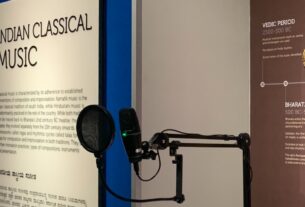The pandemic made virtual tours very popular, allowing users to explore a new destination—all in the comfort of their homes.
Pranita was quite bored during the pandemic—being at home made her want to travel and explore new places, but the situation outside put her hopes on hold.
“I wanted to go out but it was not possible. I felt stifled at home but I had no option,” she said.
But one day, she was browsing the internet when she came across the idea of going on a virtual tour. She dived right in, and was very impressed—the virtual tour was a beautiful simulation of an existing location. The sequence of videos or still images made it possible to visit a whole new place.
Apart from virtual tour companies, applications like Google Arts and Culture use Artificial Reality (AR) and promote such tours for free. In Bengaluru, the Museum of Photography and Art (MAP) and Wonderla provide virtual tours. All these organisations use a tap and scroll process—the user looks at an image of a museum for instance, and can click on a painting to see it more closely, as if he or she is standing right there.
“I could see different places, all over the world. It was a new experience for me,” Pranita said.
Operators say that the popularity of virtual tours has increased because of pandemic restrictions.
Vinay works in Gully Tours Virtual, a virtual tour company based in Bengaluru. He said that virtual tours are a good option for people to explore different areas.
“You get people from different parts of the world and you can connect them. It is a very interesting way to explore various areas,” he added.
He also said that the pandemic has led to a rise in virtual tours, but the number of visitors can vary depending on the time.
Although these tours may not be able to replace physical tours, they are relatively cheaper and also free in some cases.
“We have done tours for a group of 10-20 people and even for larger groups of 200 people. It costs around Rs.500-600 per person,” Vinay said.
Even art galleries have stepped into the virtual fray—they say that offering such tours have improved their business.
Unnati, gallery manager of Crimson Art Gallery in Bengaluru said that Covid led to a push in digital culture. “People are still apprehensive about travelling and there are still some restrictions in place. The online tour of the gallery is a good way for them to explore the gallery and it also acts a promotional tool for us,” she said.
Unnati added that customers scroll through their online website before coming to the gallery—apart from buying artwork online, the website also gives them a sense of the place they are visiting.
Sometimes, instead of the user visiting a website to tap and explore, companies do it for them on a zoom call—they act like tour guides and do the virtual scrolling for their users. But operators underline this difference between physical and virtual tours as one of the major challenges
“The medium can sometimes be limiting because it’s hosted on online platforms like Zoom. Sometimes it can have network issues and you don’t get to see people’s responses like you can do it real life,” Vinay said.
Despite this challenge, artists say they find virtual tours immersive. Sunil Kumar Sinha, an artist said. He added that although virtual tours are not as good as physical tours, it is good when one wants to explore a place from their homes.
“I am still apprehensive about going to public places but whenever I want to go to, I check the website and see if they have virtual galleries. I have attended a few virtual tours too,” he said.




